Lang Qin
3D Deep-learning-based Segmentation of Human Skin Sweat Glands and Their 3D Morphological Response to Temperature Variations
Apr 24, 2025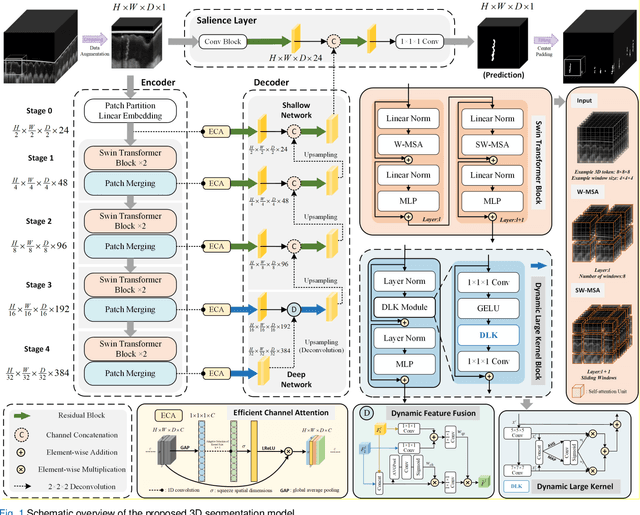
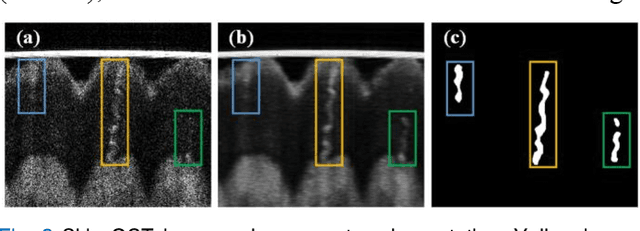
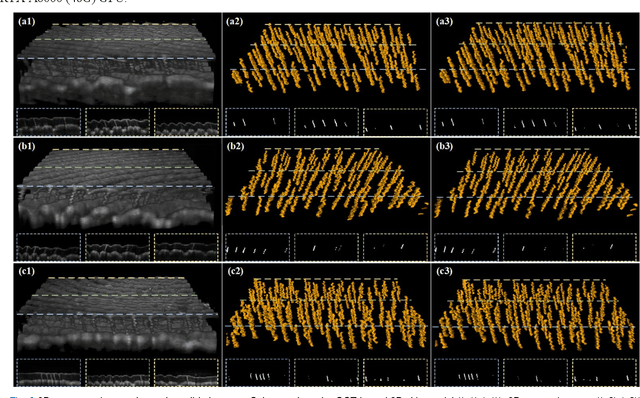
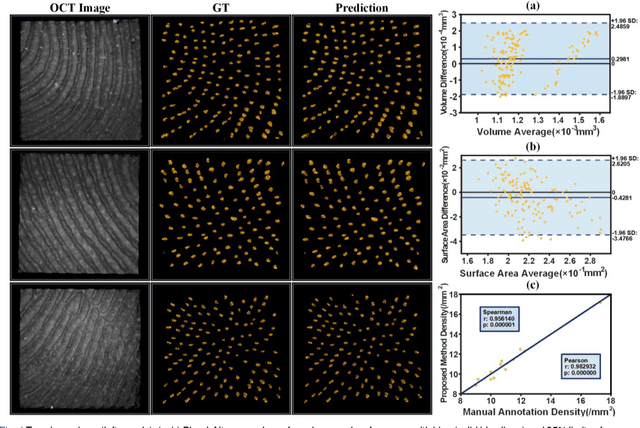
Abstract:Skin, the primary regulator of heat exchange, relies on sweat glands for thermoregulation. Alterations in sweat gland morphology play a crucial role in various pathological conditions and clinical diagnoses. Current methods for observing sweat gland morphology are limited by their two-dimensional, in vitro, and destructive nature, underscoring the urgent need for real-time, non-invasive, quantifiable technologies. We proposed a novel three-dimensional (3D) transformer-based multi-object segmentation framework, integrating a sliding window approach, joint spatial-channel attention mechanism, and architectural heterogeneity between shallow and deep layers. Our proposed network enables precise 3D sweat gland segmentation from skin volume data captured by optical coherence tomography (OCT). For the first time, subtle variations of sweat gland 3D morphology in response to temperature changes, have been visualized and quantified. Our approach establishes a benchmark for normal sweat gland morphology and provides a real-time, non-invasive tool for quantifying 3D structural parameters. This enables the study of individual variability and pathological changes in sweat gland structure, advancing dermatological research and clinical applications, including thermoregulation and bromhidrosis treatment.
Listen to the Patient: Enhancing Medical Dialogue Generation with Patient Hallucination Detection and Mitigation
Oct 08, 2024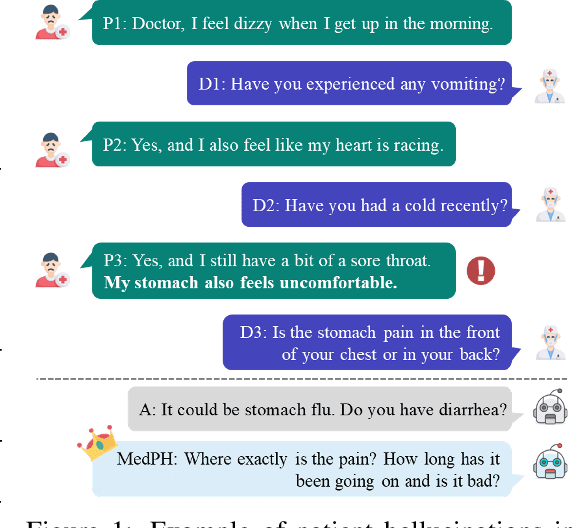

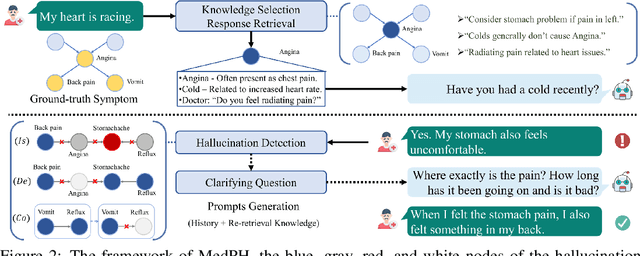
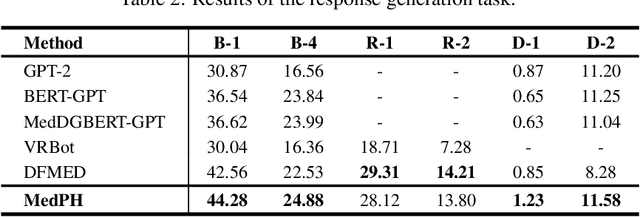
Abstract:Medical dialogue systems aim to provide medical services through patient-agent conversations. Previous methods typically regard patients as ideal users, focusing mainly on common challenges in dialogue systems, while neglecting the potential biases or misconceptions that might be introduced by real patients, who are typically non-experts. This study investigates the discrepancy between patients' expressions during medical consultations and their actual health conditions, defined as patient hallucination. Such phenomena often arise from patients' lack of knowledge and comprehension, concerns, and anxieties, resulting in the transmission of inaccurate or wrong information during consultations. To address this issue, we propose MedPH, a Medical dialogue generation method for mitigating the problem of Patient Hallucinations designed to detect and cope with hallucinations. MedPH incorporates a detection method that utilizes one-dimensional structural entropy over a temporal dialogue entity graph, and a mitigation strategy based on hallucination-related information to guide patients in expressing their actual conditions. Experimental results indicate the high effectiveness of MedPH when compared to existing approaches in both medical entity prediction and response generation tasks, while also demonstrating its effectiveness in mitigating hallucinations within interactive scenarios.
GRSN: Gated Recurrent Spiking Neurons for POMDPs and MARL
Apr 24, 2024



Abstract:Spiking neural networks (SNNs) are widely applied in various fields due to their energy-efficient and fast-inference capabilities. Applying SNNs to reinforcement learning (RL) can significantly reduce the computational resource requirements for agents and improve the algorithm's performance under resource-constrained conditions. However, in current spiking reinforcement learning (SRL) algorithms, the simulation results of multiple time steps can only correspond to a single-step decision in RL. This is quite different from the real temporal dynamics in the brain and also fails to fully exploit the capacity of SNNs to process temporal data. In order to address this temporal mismatch issue and further take advantage of the inherent temporal dynamics of spiking neurons, we propose a novel temporal alignment paradigm (TAP) that leverages the single-step update of spiking neurons to accumulate historical state information in RL and introduces gated units to enhance the memory capacity of spiking neurons. Experimental results show that our method can solve partially observable Markov decision processes (POMDPs) and multi-agent cooperation problems with similar performance as recurrent neural networks (RNNs) but with about 50% power consumption.
EAS-SNN: End-to-End Adaptive Sampling and Representation for Event-based Detection with Recurrent Spiking Neural Networks
Mar 19, 2024
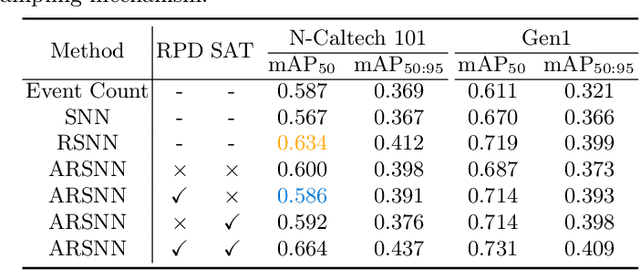
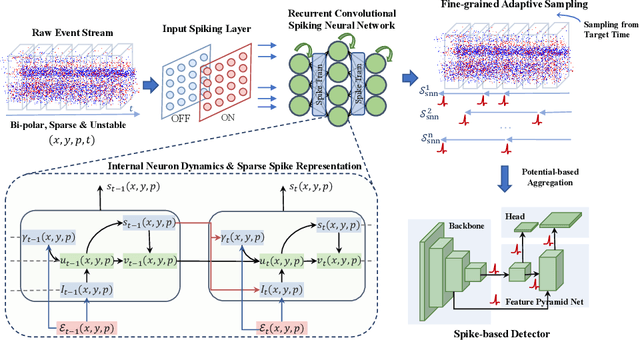
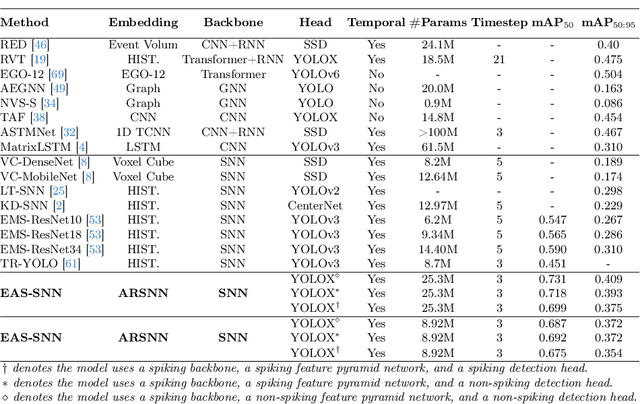
Abstract:Event cameras, with their high dynamic range and temporal resolution, are ideally suited for object detection, especially under scenarios with motion blur and challenging lighting conditions. However, while most existing approaches prioritize optimizing spatiotemporal representations with advanced detection backbones and early aggregation functions, the crucial issue of adaptive event sampling remains largely unaddressed. Spiking Neural Networks (SNNs), which operate on an event-driven paradigm through sparse spike communication, emerge as a natural fit for addressing this challenge. In this study, we discover that the neural dynamics of spiking neurons align closely with the behavior of an ideal temporal event sampler. Motivated by this insight, we propose a novel adaptive sampling module that leverages recurrent convolutional SNNs enhanced with temporal memory, facilitating a fully end-to-end learnable framework for event-based detection. Additionally, we introduce Residual Potential Dropout (RPD) and Spike-Aware Training (SAT) to regulate potential distribution and address performance degradation encountered in spike-based sampling modules. Through rigorous testing on neuromorphic datasets for event-based detection, our approach demonstrably surpasses existing state-of-the-art spike-based methods, achieving superior performance with significantly fewer parameters and time steps. For instance, our method achieves a 4.4\% mAP improvement on the Gen1 dataset, while requiring 38\% fewer parameters and three time steps. Moreover, the applicability and effectiveness of our adaptive sampling methodology extend beyond SNNs, as demonstrated through further validation on conventional non-spiking detection models.
Well Begun is Half Done: Generator-agnostic Knowledge Pre-Selection for Knowledge-Grounded Dialogue
Oct 20, 2023



Abstract:Accurate knowledge selection is critical in knowledge-grounded dialogue systems. Towards a closer look at it, we offer a novel perspective to organize existing literature, i.e., knowledge selection coupled with, after, and before generation. We focus on the third under-explored category of study, which can not only select knowledge accurately in advance, but has the advantage to reduce the learning, adjustment, and interpretation burden of subsequent response generation models, especially LLMs. We propose GATE, a generator-agnostic knowledge selection method, to prepare knowledge for subsequent response generation models by selecting context-related knowledge among different knowledge structures and variable knowledge requirements. Experimental results demonstrate the superiority of GATE, and indicate that knowledge selection before generation is a lightweight yet effective way to facilitate LLMs (e.g., ChatGPT) to generate more informative responses.
A Low Latency Adaptive Coding Spiking Framework for Deep Reinforcement Learning
Nov 21, 2022Abstract:With the help of Deep Neural Networks, Deep Reinforcement Learning (DRL) has achieved great success on many complex tasks during the past few years. Spiking Neural Networks (SNNs) have been used for the implementation of Deep Neural Networks with superb energy efficiency on dedicated neuromorphic hardware, and recent years have witnessed increasing attention on combining SNNs with Reinforcement Learning, whereas most approaches still work with huge energy consumption and high latency. This work proposes the Adaptive Coding Spiking Framework (ACSF) for SNN-based DRL and achieves low latency and great energy efficiency at the same time. Inspired by classical conditioning in biology, we simulate receptors, central interneurons, and effectors with spike encoders, SNNs, and spike decoders, respectively. We use our proposed ACSF to estimate the value function in reinforcement learning and conduct extensive experiments to verify the effectiveness of our proposed framework.
 Add to Chrome
Add to Chrome Add to Firefox
Add to Firefox Add to Edge
Add to Edge